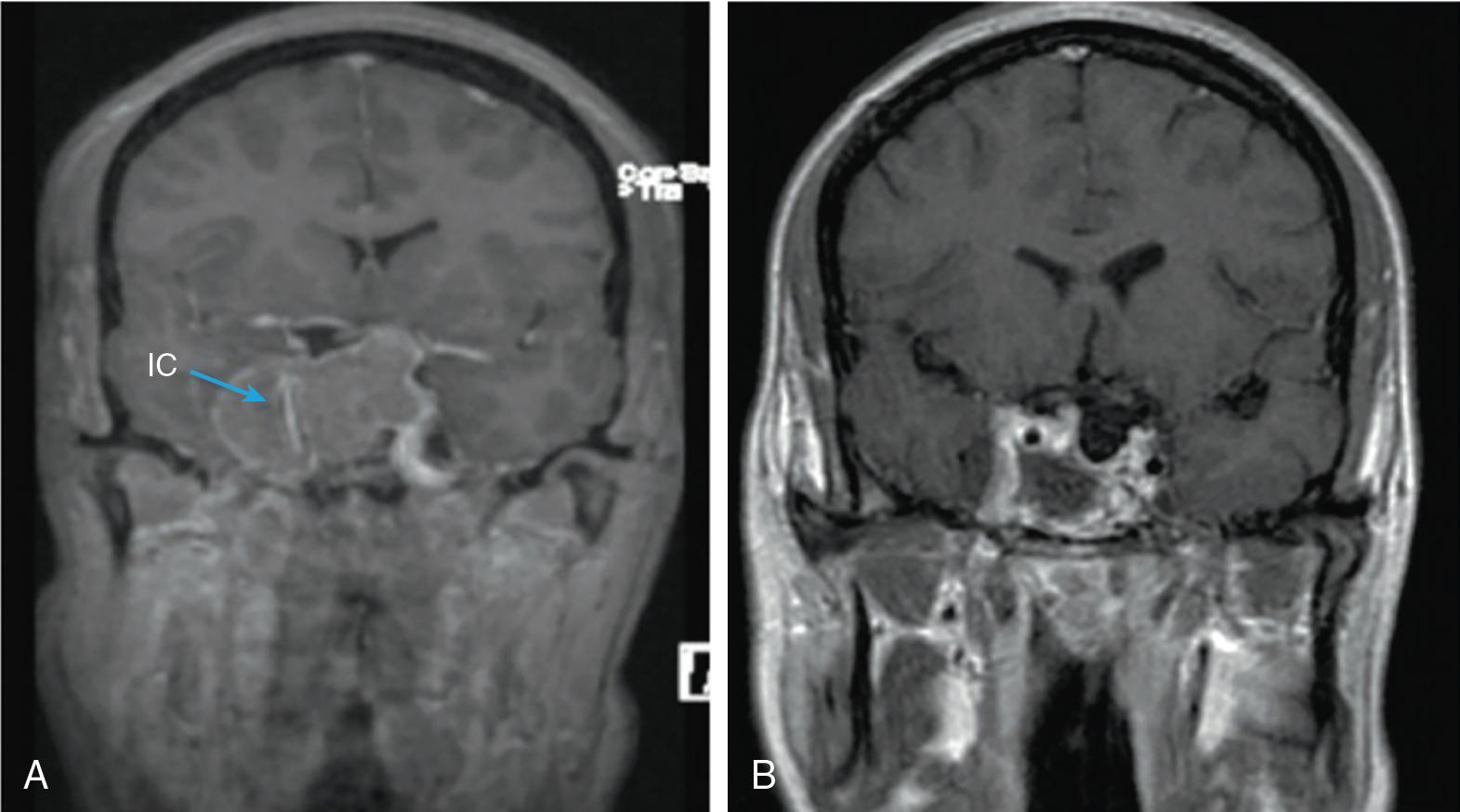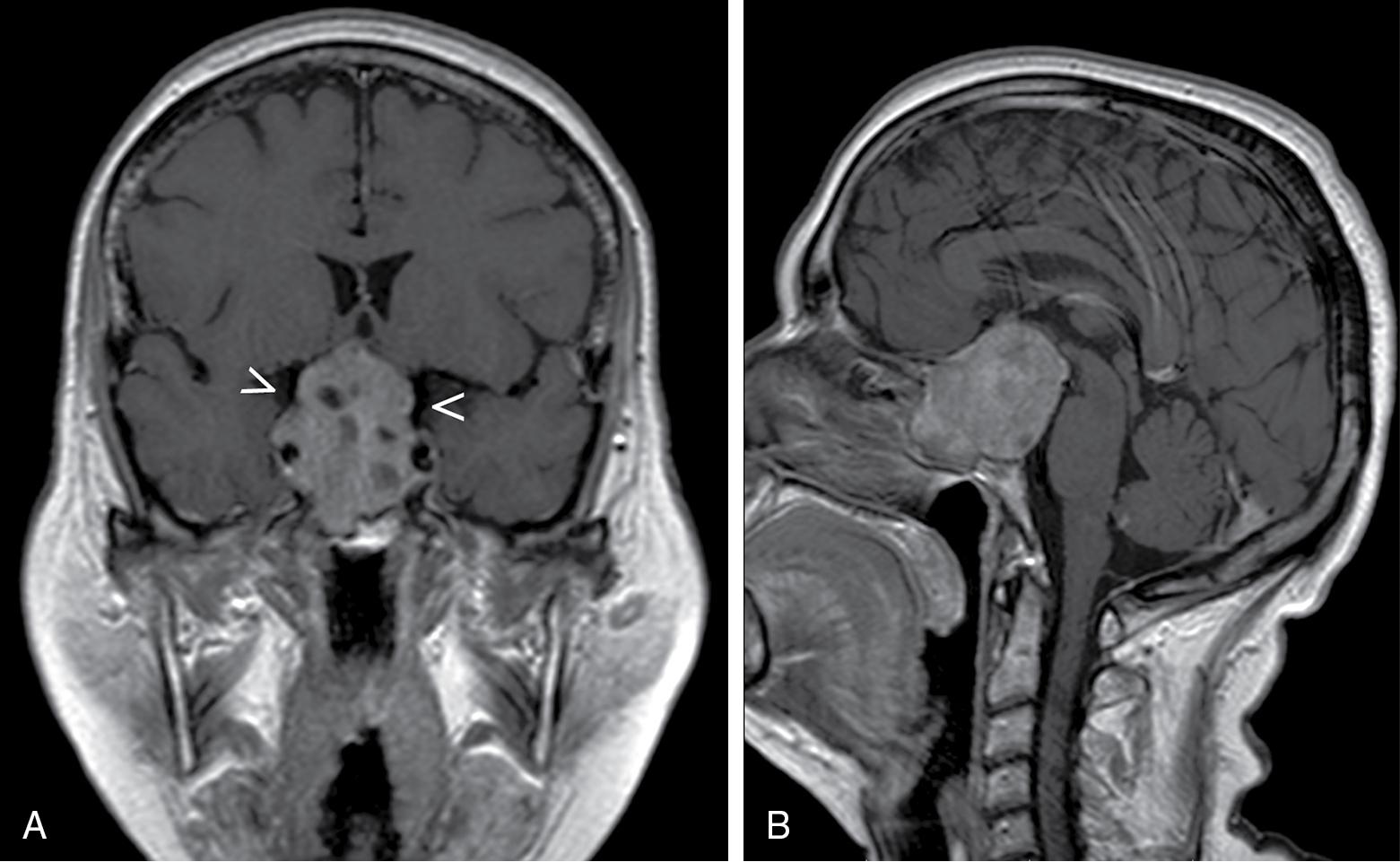Physical Address
304 North Cardinal St.
Dorchester Center, MA 02124
Pituitary adenomas are the most common brain tumors, with a prevalence of 10% to 15% of all intracranial tumors. Pituitary adenomas can present as hormonally active tumors with autonomous hormone secretion or, more commonly, as nonfunctioning lesions with symptoms related to mass effect. The most common presenting symptoms include headaches, visual changes related to suprasellar extension toward the optic chiasm, and cranial nerve (CN) deficits (CN III, IV, V1, V2, VI palsies) in cases of lateral extension into the cavernous sinus.
The transsphenoidal approach has been used since the early 1960s, and advances in endoscopic visualization and techniques have resulted in the majority of pituitary adenomas being resected with a purely endoscopic approach. Postoperative cerebrospinal fluid (CSF) leak remains a serious complication, which may cause intracranial infection or pneumocephalus and often requires reoperation to identify and repair the CSF fistula. Surgery of intrasellar lesions can result in evident intraoperative CSF leak in as many as 40% to 60% of the cases. The postoperative leak rate of endoscopic pituitary surgery ranges from 1.6% to 10% and has decreased significantly in the past years because of better reconstruction options and increasing surgical experience. , Revision cases have higher incidence of intraoperative leak; however, this does not result in a higher risk of a postoperative CSF leak, which is discussed in detail in this chapter.
Reconstruction after pituitary surgery consists of two stages: intrasellar packing and sellar floor reconstruction. Different techniques have been described to perform intrasellar packing and reconstruction of the sellar floor using autologous grafts (free mucosal grafts, fascia lata, or pedicled vascularized flaps) and artificial dura mater. The question is if reconstruction with grafts and flaps or artificial dura is always necessary after every pituitary adenoma removal. With the help of the latest quality of life (QoL) studies using the sino-nasal outcome test (SNOT-22) questionnaire, we are better able to choose the optimal reconstruction with minimal damage to the donor site. We have identified important risk factors in this chapter and discuss the different reconstruction methods in detail.
Many risk factors have been defined and must be taken into consideration when choosing reconstruction of the skull base or sellar floor. It is essential to plan preoperatively which kind of reconstruction will be needed because reconstruction with the pedicled vascularized nasoseptal flap (NSF) consists of raising the flap at the beginning of the operation to protect the posterior pedicle during the expanded sphenoidotomy. The risk for expected CSF leaks can be defined as low, mid and high risk cases (see diagraph page 225). If no CSF leak is expected during the operation, raising the flap at the beginning of the surgery will be unnecessary. A higher risk for CSF leak is expected for overweight and obese patients (body mass index [BMI] .25 kg/m 2 ) than for those with a healthy weight. Sellar reconstruction in pediatric patients also requires special attention. We will further discuss tumor and patient-related risk factors.
The type of reconstruction needed heavily depends on the type of CSF leak expected (low or high flow). When the patient has a large pituitary adenoma with extensive suprasellar extension ( Fig. 31.1 ), it can be expected that because of the proximity to the third ventricle, a high-flow leak will be the result, and thus an extended reconstruction will be needed. Extension of the tumor beyond the diaphragma sella will lead to a significant defect of the dura and a higher risk of a high-flow leak ( Fig. 31.2 ), but tumor consistency is also important: softer and cystic lesions are easier to remove than tumors with hard or rubbery consistency, which are harder to remove and can lead to arachnoid tears. Higher rates of postoperative CSF leaks are also seen in patients with growth hormone (GH)–producing adenomas, leading to acromegaly. Acromegaly is characterized by bony and soft tissue enlargement and a host of comorbidities caused by elevated levels of insulin-like growth factor–1 and GH. Patients with acromegaly can have different types of tumors, microadenomas or macroadenomas. Because of bony enlargement, these patients more often require extensive drilling, leading to a slightly higher incidence of postoperative CSF leaks.


Resection of microadenomas causing Cushing’s disease is technically a more difficult procedure than a small nonsecreting pituitary adenoma, and removing the tumor in its entirety to achieve remission of the Cushing’s disease may lead to a higher rate of intraoperative CSF leak caused by arachnoid tears.
Become a Clinical Tree membership for Full access and enjoy Unlimited articles
If you are a member. Log in here